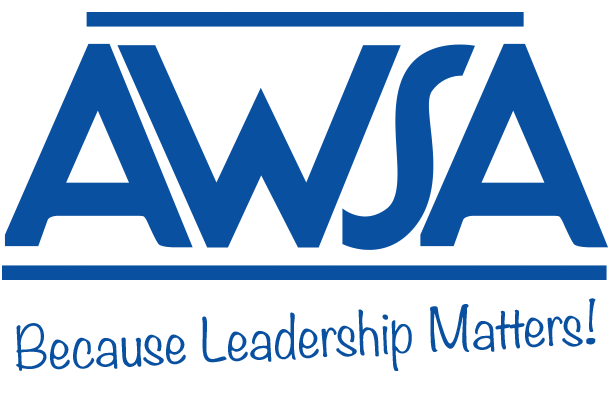Embracing The Power of a Both/And Mindset as a Bridge to a Better Placeby Joe Schroeder, Ph.D. Associate Executive Director, AWSA Virtually everything of late seems to be cast as this or that, right or wrong, black or white, us or them. In short, we are coaxed into believing that this is an Either/Or world—always has been, always will be. As is clearly evident through daily news sources, such simple, dualistic thinking fosters unceasing conflict and upheaval for sure and, I would add, presents significant barriers to our own individual and collective progress. Now, instead, imagine a world where leaders like us regularly embraced a Both/And mentality and increasingly brought such a mindset to bear in our daily work and living, influencing those in our circle like mindedly over time through our example? What then might be possible? The conventional Either/Or mindset is far from new. For example, in the 19th-century, back-to-nature classic, Walden, Henry David Thoreau used metaphor about the short path from his humble cabin to the shore to caution us about the perils of a fixed, dualistic mindset: I had not lived there a week before my feet wore a path from my door to the pond-side; and though it is five or six years since I trod it, that path is still quite distinct. It is true, I fear that others may have fallen into it, and so helped to keep the path open. The surface of the earth is soft and impressible by the feet of men; and so with the paths which the mind travels. How worn and dusty, then, must be the highways of the world, how deep the ruts of tradition and conformity! (Walden, 2014). So leaders, beware of such conventional mindsets that have us fall into the ruts of unreflective thoughts and behaviors which show up again and again, compelling us to see the world as endless dichotomies that can have us chasing false, forced choices that are products of what we see through the prism of an Either/Or mindset. Here are a few examples, common now for school leaders, that you might identify in yourself and/or in others:
To be clear, there are benefits to each aspect of what is shared in the bullets above. The problem arises when we feel we have to select one aspect of the polarity over the other as some sort of forced Either/Or choice and continue living solely—or nearly so—in that space, without prospects for changing this situation in the foreseeable future. In the opening anecdote of Upstream, (Heath, 2020), author Dan Heath points out how our understandably tempting tendency in such times as these to live solely in the immediate and urgent can reinforce an Either/Or mindset and create a self-fulfilling prophecy, unless we find means to break the cycle: You and a friend are having a picnic by the side of a river. Suddenly you hear a shout from the direction of the water—a child is drowning. Without thinking, you both dive in, grab the child, and swim to shore. Before you can recover, you hear another child cry for help. You and your friend jump back in the river to rescue her as well. Then another struggling child drifts into sight . . . and another . . . and another. The two of you can barely keep up. Suddenly, you see your friend wading out of the water, seeming to leave you alone. “Where are you going?” you demand. Your friend answers, “I’m going upstream to tackle the guy who’s throwing all these kids in the water.” Heath’s counsel throughout the book reflects a Both/And mindset—that is, address BOTH the immediate needs AND work upstream/long-term—and be okay living in the realistic, grey ambiguity of that Both/And space rather than craving for the safe, but very limited, space of Either/Or thinking and doing. For principals, living out a Both/And mindset might show up as some or all of the following:
In short, we should avoid falling into the conventional ruts of an Either/Or mindset that would have us think we need to choose between EITHER being vulnerable OR strong, EITHER pursuing management OR leadership, EITHER closing gaps OR raising the bar, EITHER healing OR growing our community. In fact, finding the Both/And balance between such polarities is most likely where the deep impact is, if we can just learn to live in the disquieting discomfort of the accompanying ambiguity and help those in our circle learn to do the same. As I pen this article, it is the day before Thanksgiving. So although you will read this after that holiday of thanks, I would like to live out the research of Brene Brown (2018), which concludes that gratitude is more than “an attitude of gratitude” but actually, when powerfully showing up in lives, it is a practice that can be developed in any of us through habit and discipline. Importantly, her research concludes that gratitude is the pathway for inviting joy into our lives. So, with this in mind, thank you for being you, for continuing to show up in the leadership arena, for being willing to continually reflect on your practices and on themes like the one in this article that might have you consider the helpfulness of BOTH what you currently hold to be true AND another perspective that might bridge a gap through the current challenging leadership terrain to liberate latent capacity in you and in those you serve. Regardless, may you and yours find many reasons to practice gratitude and build pathways to joy and fulfillment in the holiday season and beyond. References Brown, B. (2018). Dare to lead: Brave work. Tough conversations. Whole hearts. New York: Penguin Heath, D. (2020). Upstream: How to solve problems before they happen. London: Transworld Publishers. Thoreau, H.D. (2014). Walden. Black and White Classics. ISBN: 978-1505297720. Read more at:
|
